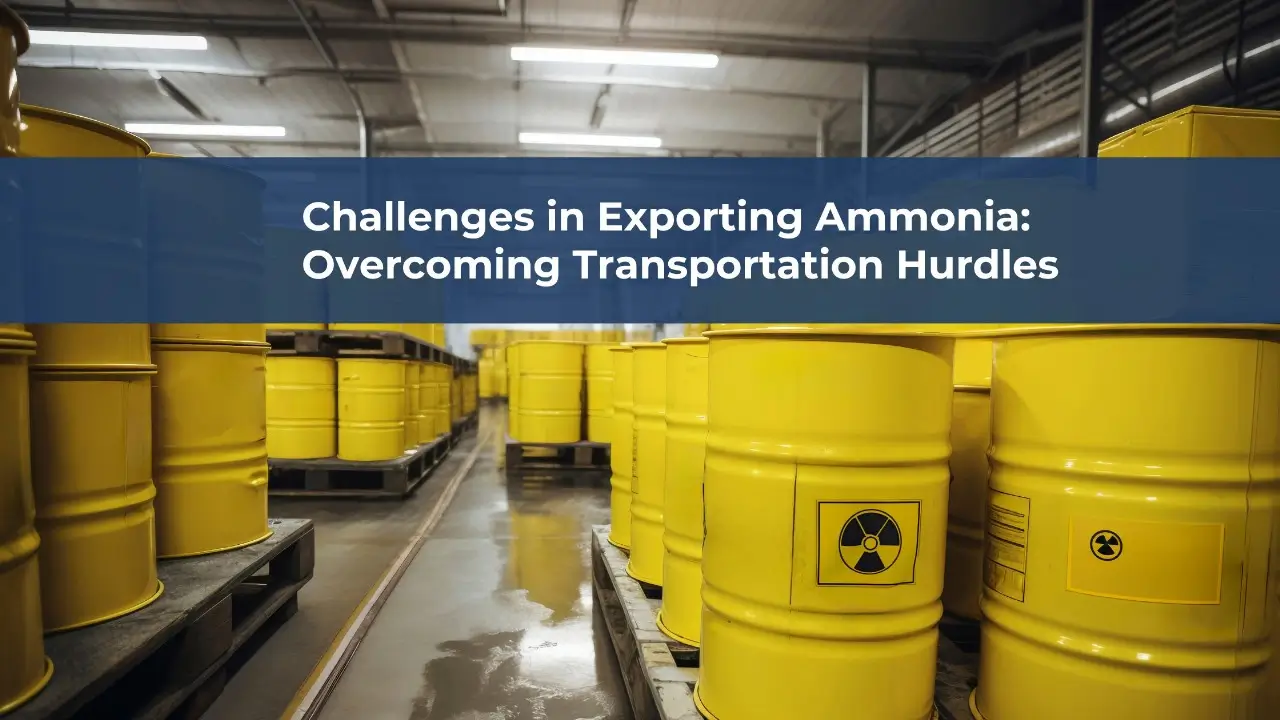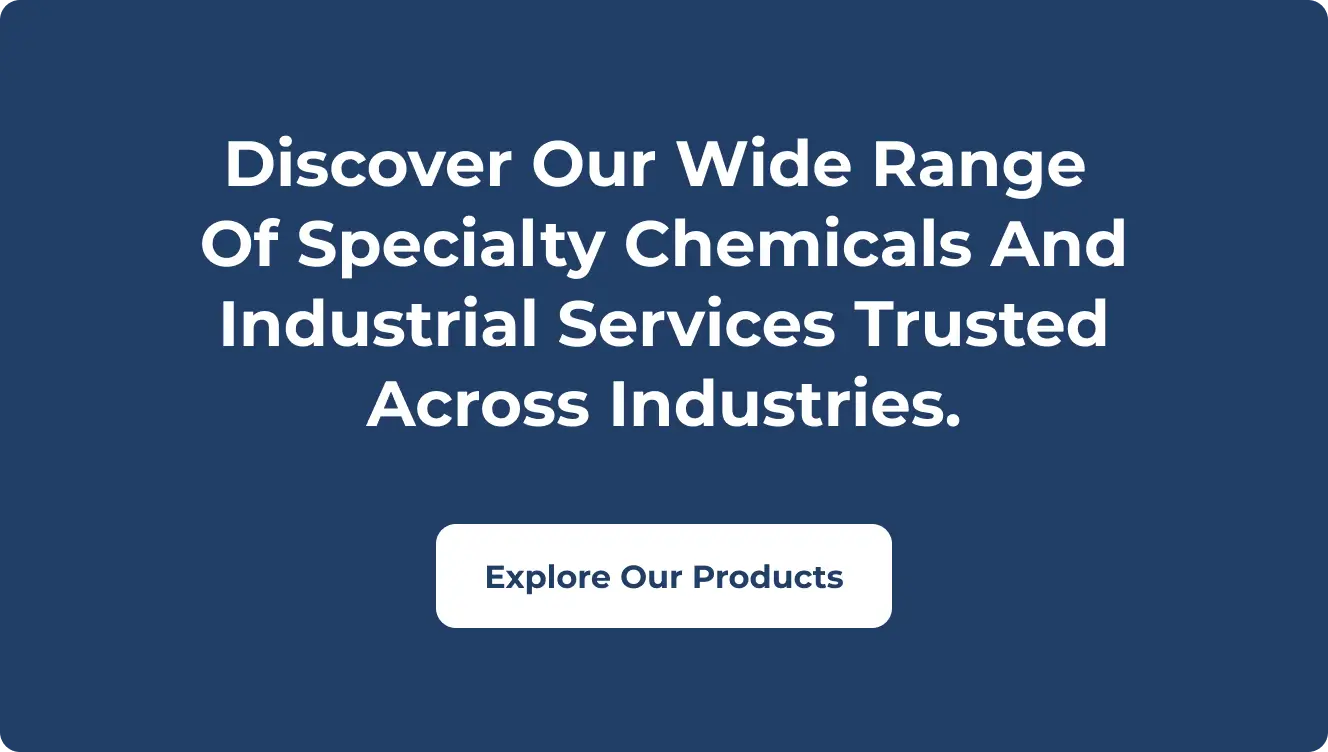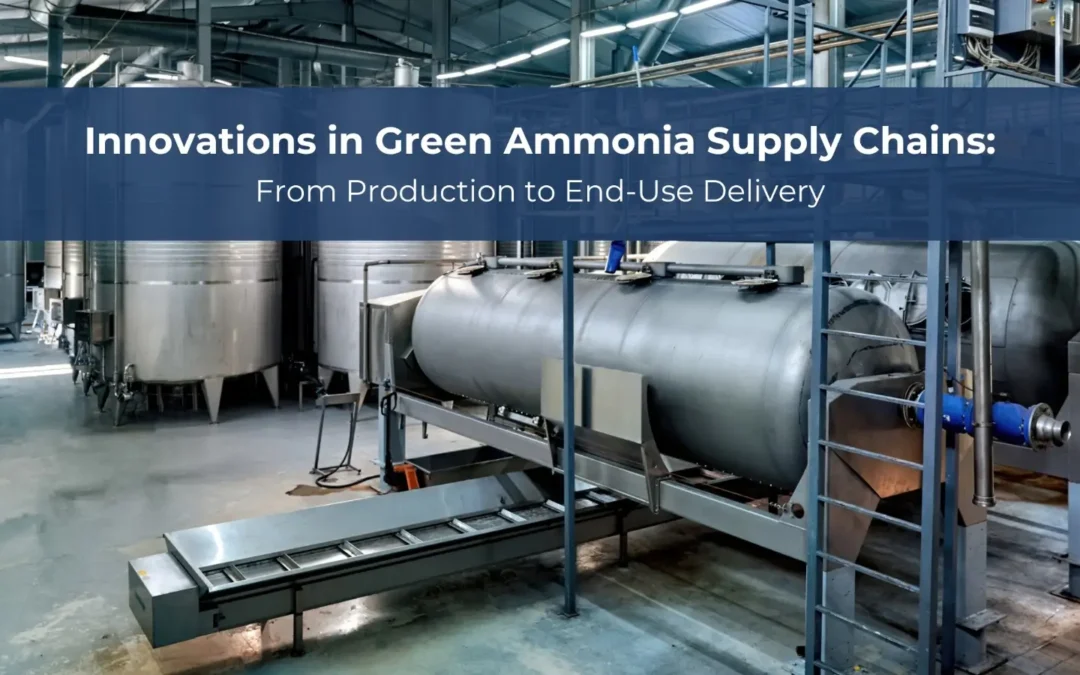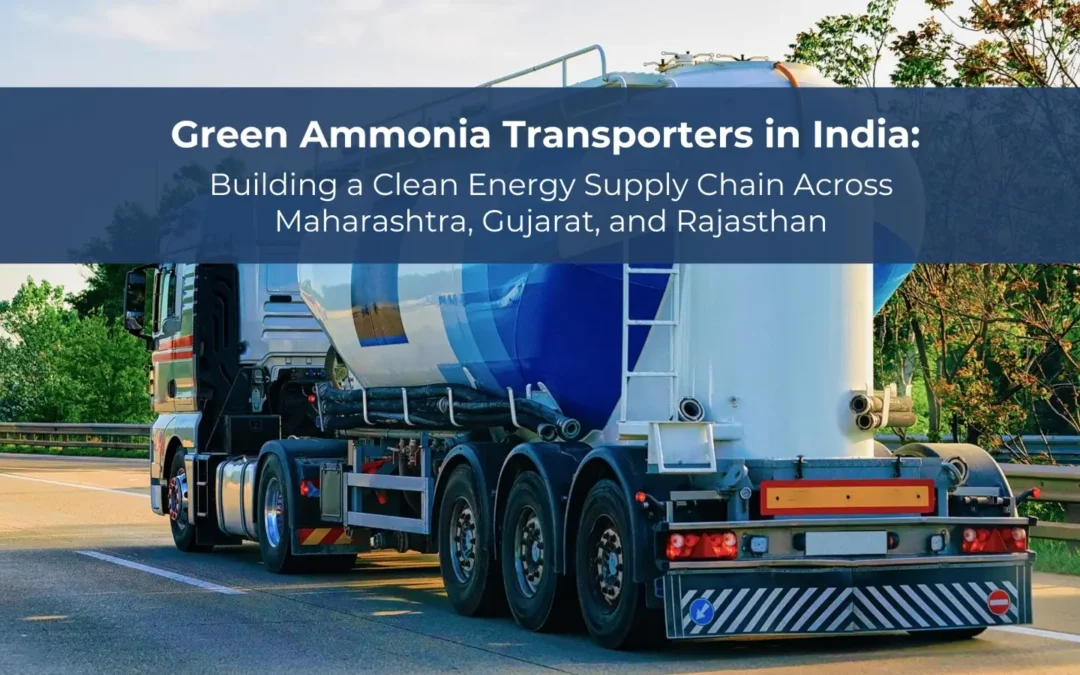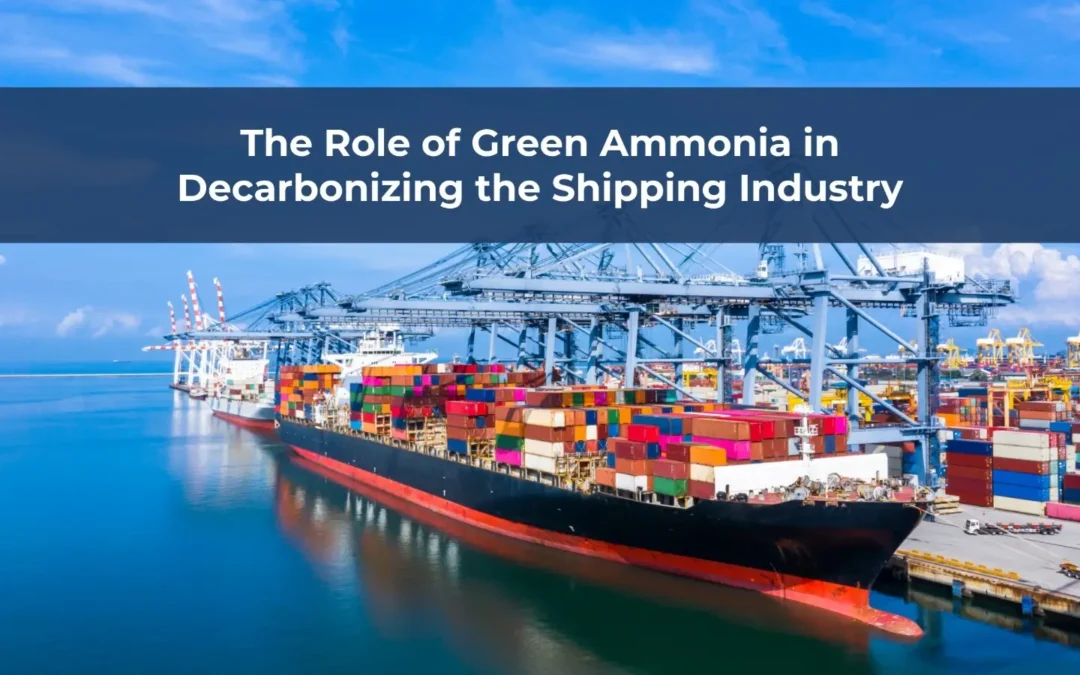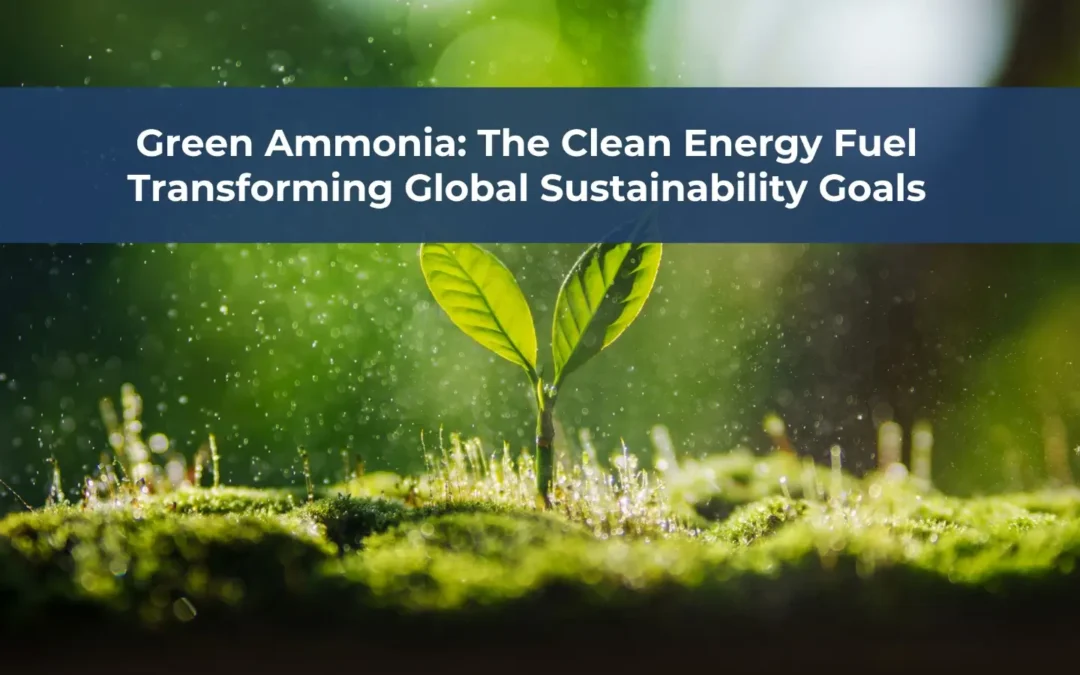Exporting ammonia is a critical component of the global chemical trade. With its wide-ranging applications in agriculture, refrigeration, pharmaceuticals, and various industrial processes, ammonia is consistently in demand across international markets. However, its chemical properties, safety risks, and regulatory complexities make it one of the most challenging substances to transport and export.
Unlike more stable industrial goods, ammonia especially in its anhydrous form requires specialized infrastructure, strict adherence to safety standards, and careful coordination between multiple stakeholders. This blog explores the key challenges associated with exporting ammonia and how industry players are working to overcome these hurdles.
Understanding the Nature of Ammonia
Ammonia is a colorless gas with a pungent smell, commonly stored under pressure as a liquid. It is highly corrosive, toxic when inhaled, and reactive with other substances. These hazardous characteristics necessitate a highly controlled environment during storage and transportation.
Anhydrous ammonia, the form most often traded internationally, must be stored in pressurized containers or cooled to very low temperatures. Even a minor leak during transit can lead to serious health risks, environmental damage, and liability for the exporter. As a result, transporting ammonia demands extreme precision and robust safety protocols.
The Regulatory Maze of Ammonia Exports
One of the foremost challenges in exporting ammonia is navigating the web of international and local regulations. Ammonia is classified as a hazardous material in most jurisdictions, which means it is subject to strict compliance protocols under global frameworks such as the IMDG (International Maritime Dangerous Goods) Code, ADR (European Agreement concerning the International Carriage of Dangerous Goods by Road), and other national transport regulations.
Exporters must provide accurate documentation, including Safety Data Sheets (SDS), certificates of analysis, customs declarations, and shipping permits. Compliance failures can result in shipment delays, fines, or bans. In some regions, regulations differ even within the same country adding further complexity.
This ever-evolving regulatory landscape requires exporters to stay continuously updated, invest in dedicated compliance teams, and establish close relationships with customs and port authorities.
Infrastructure and Equipment Limitations
The global infrastructure needed to support ammonia exports is not evenly distributed. While some regions have state-of-the-art facilities with ammonia-compatible handling systems, others lack the specialized terminals, loading/unloading docks, or storage containers required for safe transfer.
For instance, not all ports are equipped to handle ISO tanks or pressure-controlled containers. Inland transport also presents its own challenges: roads might be inadequate, emergency response systems might be underdeveloped, and drivers may not be trained to handle hazardous chemicals.
To compensate, exporters often need to use alternative ports, split bulk shipments into smaller loads, or implement extensive training programs for personnel. These adjustments significantly increase the time and cost involved in fulfilling international orders.
Packaging and Transportation Risks
Ammonia is typically exported in specialized containers such as tonners, cylinders, ISO tanks, or cryogenic tankers. These containers must be leak-proof, pressure-resistant, and capable of withstanding extreme temperature changes during transit.
A common cause of logistical complications in ammonia exports is container malfunction such as faulty valves, improper seals, or inadequate venting mechanisms. To mitigate these risks, regular maintenance, inspections, and quality assurance protocols are vital.
The loading and unloading stages also carry high risk. A sudden release of ammonia gas can endanger workers, damage equipment, and trigger regulatory investigations. That’s why exporters must implement multiple layers of safety checks, emergency response training, and secure transfer procedures.
Environmental and Sustainability Considerations
In recent years, growing attention to climate change and sustainability has increased scrutiny on the chemical export sector. Exporting ammonia involves energy-intensive production, high-emission transportation fleets, and potential environmental risks during transit.
Stakeholders now expect exporters to demonstrate environmental responsibility by adopting greener transportation methods, reducing emissions, and improving waste management systems. Exporters may need to invest in cleaner fuel technologies, eco-friendly packaging, or carbon-offset initiatives to remain competitive in global markets.
In addition, international buyers are increasingly requesting environmental performance reports or sustainability certifications as part of their procurement criteria. Integrating such initiatives is no longer optional, it’s becoming a necessity.
Customization for End Markets
Every country, and sometimes every customer, has unique requirements for how ammonia should be packaged, labeled, and delivered. Some importers may require specific grades or purities, while others demand particular container types or labeling systems in their native languages.
Exporters must be able to customize their operations to meet these diverse demands. This includes adapting bottling formats, offering flexible delivery timelines, and providing documentation that satisfies both buyer and government requirements. Achieving this level of responsiveness requires agility in production and logistics operations.
Moreover, cultural and communication barriers can often complicate negotiations and after-sales support. Exporters that invest in localized customer service, multilingual documentation, and cultural awareness are better positioned to build long-term global partnerships.
Investing in Technology and Digital Solutions
To address these multiple challenges, many ammonia exporters are embracing digital transformation. Real-time fleet tracking, automated documentation systems, predictive maintenance for containers, and data-driven logistics planning are becoming standard tools for efficient exports.
These technologies not only improve operational efficiency but also enhance transparency and traceability, two factors that are increasingly important for global customers and regulators alike. With real-time data, exporters can better respond to unexpected delays, mitigate risks, and assure clients of delivery integrity.
In the future, integrating AI-powered route planning, digital twins for container safety, and blockchain for supply chain validation could further streamline the ammonia export process.
Building Strong Partnerships
One of the most effective ways to overcome the transportation challenges of exporting ammonia is to form strong partnerships across the supply chain. Collaborating with experienced freight forwarders, certified logistics providers, and customs experts can reduce friction and increase reliability.
In addition, partnerships with local governments, emergency response teams, and training organizations can help build safer corridors for ammonia transport especially in emerging markets with underdeveloped infrastructure.
Working closely with international clients also helps build trust and ensures that ammonia is delivered in the right format, within the agreed timeframe, and in full compliance with destination-country regulations.
Conclusion
Exporting ammonia is a high-risk, high-reward operation that demands attention to detail, regulatory foresight, technical know-how, and strategic planning. From handling hazardous material to navigating complex international laws and delivering to infrastructure-limited regions, the process is fraught with logistical and safety challenges.
However, as global demand for ammonia continues to rise driven by agricultural needs, industrial growth, and the shift toward greener energy sources the need for reliable and responsible ammonia export practices becomes more urgent than ever.
By investing in infrastructure, embracing innovation, enhancing compliance, and prioritizing safety and sustainability, exporters can not only overcome transportation hurdles but also lead the charge in shaping a safer, more efficient global ammonia supply chain.


